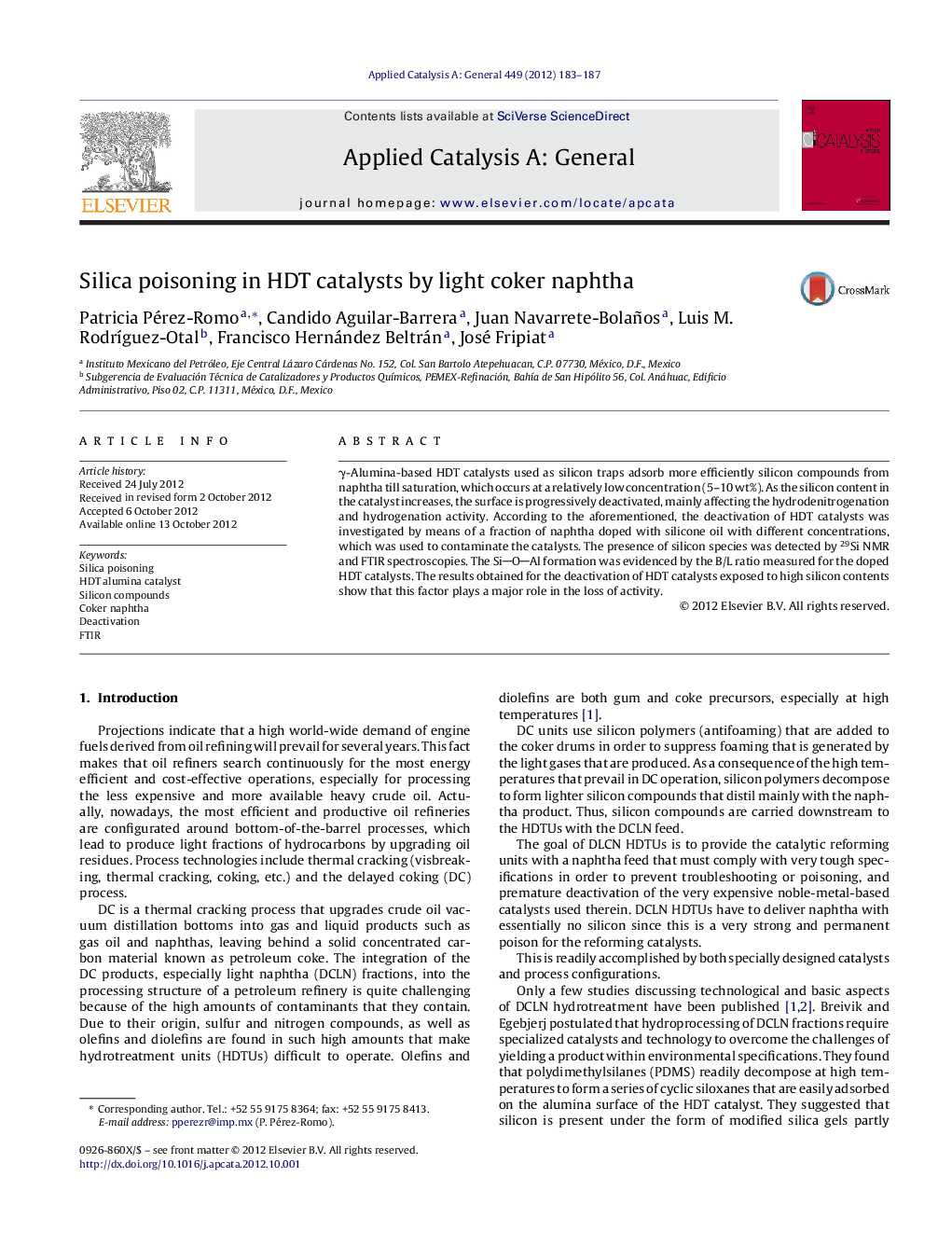| کد مقاله | کد نشریه | سال انتشار | مقاله انگلیسی | نسخه تمام متن |
|---|---|---|---|---|
| 40761 | 45864 | 2012 | 5 صفحه PDF | دانلود رایگان |

γ-Alumina-based HDT catalysts used as silicon traps adsorb more efficiently silicon compounds from naphtha till saturation, which occurs at a relatively low concentration (5–10 wt%). As the silicon content in the catalyst increases, the surface is progressively deactivated, mainly affecting the hydrodenitrogenation and hydrogenation activity. According to the aforementioned, the deactivation of HDT catalysts was investigated by means of a fraction of naphtha doped with silicone oil with different concentrations, which was used to contaminate the catalysts. The presence of silicon species was detected by 29Si NMR and FTIR spectroscopies. The SiOAl formation was evidenced by the B/L ratio measured for the doped HDT catalysts. The results obtained for the deactivation of HDT catalysts exposed to high silicon contents show that this factor plays a major role in the loss of activity.
Silicon content on doped HDT catalyst.Figure optionsDownload high-quality image (173 K)Download as PowerPoint slideHighlights
► The rate of adsorption is controlled by the transformation of silicon species.
► Silicon species interact with the alumina surface, forming Brønsted acid sites.
► The amount of silicon plays a major role for HDN and hydrogenation reactions.
Journal: Applied Catalysis A: General - Volume 449, 27 December 2012, Pages 183–187